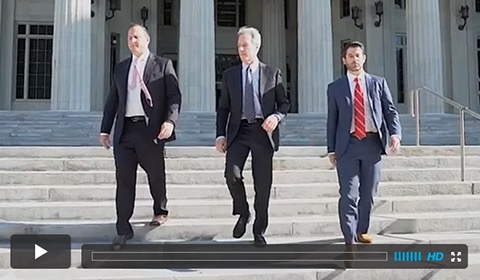Even a Race Car Driver Will Lose Control During a Tread Separation
Florida drivers need to understand the dynamics regarding the loss of vehicle control during a tread separation event. Tread separations occur predominantly in warm weather states. Florida, Texas, Arizona and California experience the highest number of tread separations throughout the country. Heat contributes to the degradation of a tire, and therefore it is no coincidence that tire defect cases involving tread separations occur most frequently in these states.
Tread separations also typically occur at highway speeds because the centrifical force of highway speeds is necessary to initiate the force which allows for the unraveling of the tire tread, and the separation of the tread and top steel belt from the remainder of the carcass of the tire.
A tread separation event is a specific type of tire failure that results in certain vehicle dynamics which make it virtually impossible to control the vehicle at highway speeds. Tire manufacturers relentlessly point a finger at, and place blame on, the operator of vehicles which undergo tread separation followed by a rollover event. Nevertheless, science has shown that the operator of a vehicle which experiences a tread separation is operating a vehicle which is reacting dramatically different than it was acting moments before and just prior to the tread separation.
As Florida tire lawyers who have handled scores of tire defect cases, we have often argued to a jury that even an experienced race car driver will probably not be able to prevent a rollover where a full tread separation occurs when an SUV or light truck at highway speeds. We have made these arguments in order to articulate and emphasize the erratic behavior of a vehicle undergoing a tread separation at highway speeds. The driver will first experience a pull in the direction of the side of the vehicle on which the tread separation occurs. In order to prevent the vehicle from going off the roadway or into other traffic, an operator will typically attempt to steer in a direction counter to the pulling effect. When steering in a direction opposite to the pull, the vehicle will first respond minimally, but as soon as the tread detaches from the tire, the vehicle will make a drastic over-response to any steering input.
It is this erratic and unpredictable vehicle responsiveness which contributes to the repeated rollover events witnessed after a tread separation. As Miami injury attorneys at Halpern, Santos & Pinkert, P.A. we have recently been retained in connection with a case where the driver of a vehicle who was killed in a rollover event after a tread separation was in fact a former race car driver, and at the time of his death, an F-16 fighter jet crew chief in the Unites States Air Force.
We used to argue, poetically and theoretically, that even a race car driver could not control an SUV or light truck from rolling over after a tread separation. We are now engaged in the representation of a family, who has lost a son and father. Sadly, when we now speak about a race car driver losing control because of a tread separation event – we are talking literally, and not figuratively.














